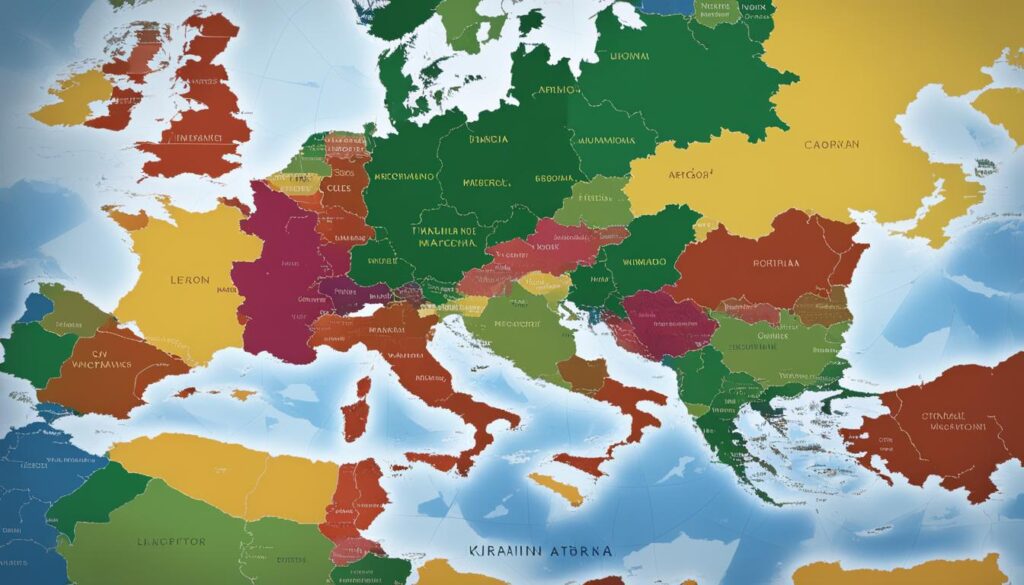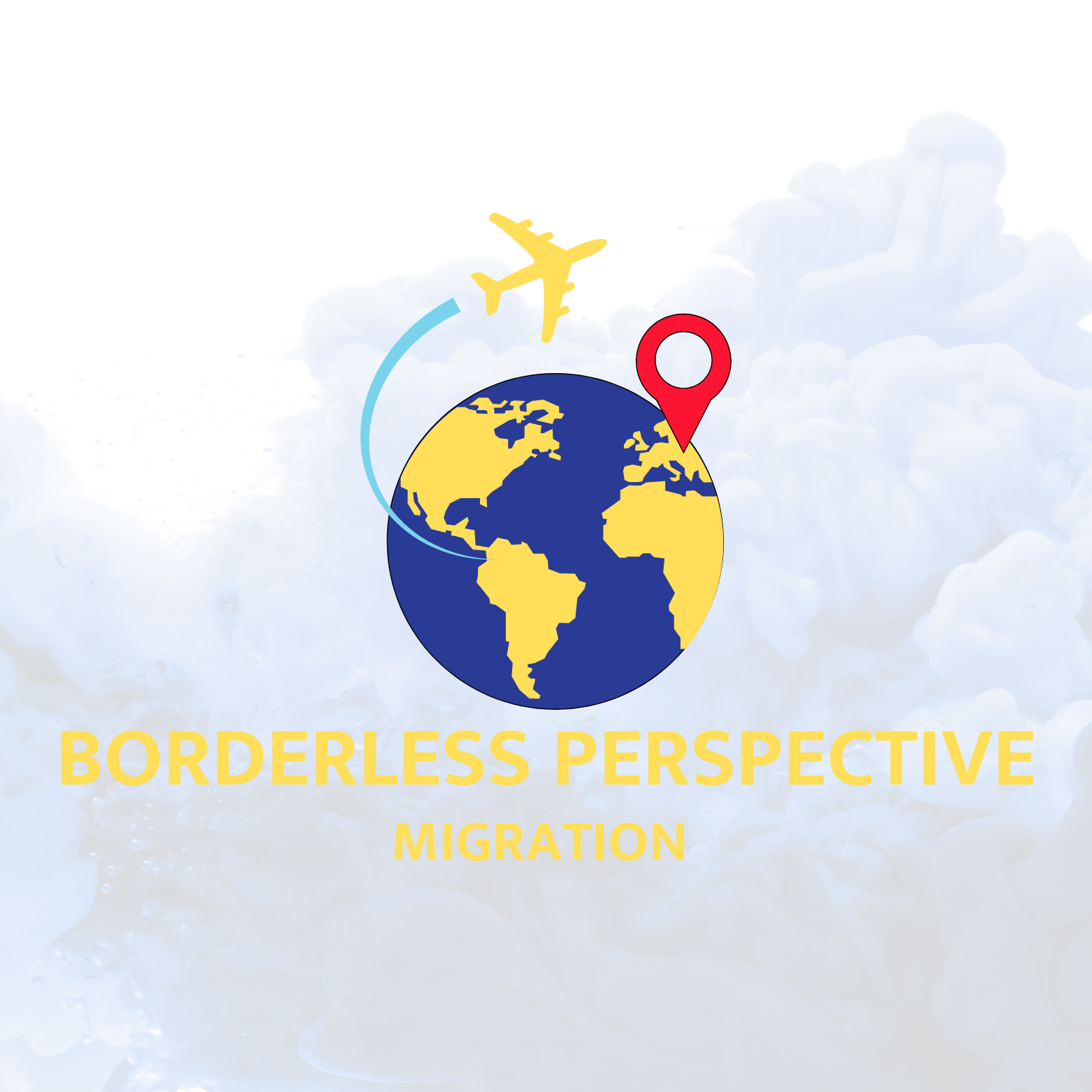
Concerns have arisen about the potential indirect consequences of Russia’s invasion of Ukraine on global migration patterns. The Ukraine crisis, with its geopolitical impact and refugee crisis, has led to forced displacement and significant changes in migration trends. Understanding the impact of this crisis on global migration patterns and immigration patterns is crucial for informing effective responses and policies.
Key Takeaways:
- The Ukraine crisis has had a profound impact on global migration patterns.
- Forced displacement and the refugee crisis have led to significant changes in migration trends.
- Understanding the geopolitical impact of the crisis is crucial in addressing migration challenges.
- The crisis has not resulted in the predicted increase in migration to Europe based on food insecurity alone.
- Data from the first eight months of 2022 suggest a more complex relationship between the Ukraine conflict and global migration patterns.
The Migration Flow resulting from the Ukraine Crisis
The Ukraine crisis, triggered by Russia’s invasion in 2022, has had a profound impact on migration patterns, resulting in a significant migration flow both internally and internationally. Millions of Ukrainians have been displaced from their homes and forced to seek refuge in neighboring countries, particularly in Central and Eastern Europe.
One of the key factors driving this migration flow is the European Neighborhood Policy, which grants Ukrainian citizens visa-free travel in the Schengen Area. This has facilitated the movement of Ukrainian migrants to countries in the region, where historical memories of Soviet influence and the presence of the Ukrainian diaspora have fostered existing bonds and led to a willingness to welcome Ukrainian refugees.
The migration flow resulting from the Ukraine crisis has also extended to Russia, albeit under different circumstances and interpretations. While the motivations behind migration to Russia amidst the conflict remain disputed, the invasion has led to a significant influx of migrants into the country.
To provide a comprehensive overview of the migration flow resulting from the Ukraine crisis, the following table presents the main destinations and characteristics of Ukrainian migrants:
| Destination | Type of Migration | Motivations |
|---|---|---|
| Central and Eastern Europe | International Migration | Seeking refuge, employment opportunities |
| Russia | International Migration | Forced transfers, humanitarian evacuations |
In conclusion, the Ukraine crisis has led to a significant migration flow, with Ukrainians seeking refuge in both Central and Eastern Europe and Russia. The response of European countries to Ukrainian refugees has highlighted a double standard in attitudes toward different refugee groups, with more positive and stable attitudes observed toward Ukrainian refugees compared to those from other regions. This migration flow has had far-reaching implications and requires careful consideration in both local and international responses to the crisis.
Section 3: The Cost of the Ukraine Crisis on Human Wellbeing
The Russian invasion of Ukraine has unleashed a devastating crisis with profound consequences for human wellbeing. The cost of war is immeasurable, encompassing economic impact, migration outflows, agricultural production, welfare, and the need for government support. The Ukraine crisis has disrupted lives, shattered communities, and created a humanitarian emergency that demands urgent attention.
The conflict has resulted in massive migration outflows, with millions of people forced to flee their homes and seek safety elsewhere. This displacement has had a profound impact on the affected citizens, leading to a loss of livelihoods, disruption of social structures, and increased vulnerability. The scale of migration outflows highlights the burden of war on individuals and their communities, emphasizing the urgent need for support and assistance.
One of the sectors most affected by the Ukraine crisis is agriculture. The conflict has disrupted agricultural production and supply chains, leading to food shortages and rising prices. The welfare of the rural population, particularly those dependent on agriculture for their livelihoods, has been severely impacted. The combination of conflict-related disruptions and economic instability has exacerbated the vulnerability of already marginalized communities, pushing them further into poverty.
| Impact of the Ukraine Crisis on Human Wellbeing: | Cost |
|---|---|
| Migration outflows | Millions displaced |
| Agricultural production | Disrupted, food shortages |
| Welfare | Increased vulnerability, rise in poverty |
The government plays a crucial role in mitigating the impact of the crisis on human wellbeing. Transparent and digital methods have been employed to provide targeted support to those affected by the conflict. This approach ensures efficient and equitable distribution of resources, helping to alleviate the suffering of the most vulnerable. However, the magnitude of the crisis demands continued international assistance and collaboration to address the multifaceted challenges faced by the Ukrainian population.
The Way Forward: Nurturing Resilience and Rebuilding Lives
The Ukraine crisis has inflicted immeasurable damage on human wellbeing, but there is hope for recovery and rebuilding. The international community must come together to provide sustained support and assistance, ensuring access to basic necessities, healthcare, and psychological support for those affected by the conflict. Additionally, efforts should focus on fostering resilience within communities, empowering individuals to rebuild their lives and create sustainable livelihoods.
“The true cost of war goes beyond economic figures; it is measured in the lives shattered, dreams destroyed, and communities torn apart. We must stand in solidarity with the Ukrainian people, offering not just financial aid, but also compassion, empathy, and a commitment to long-term support.” – International Aid Organization
- Strengthening local institutions and infrastructure to facilitate recovery.
- Investing in education and skills development to enhance long-term prospects.
- Addressing the underlying causes of the conflict to prevent future crises.
- Empowering women and marginalized groups as agents of change and resilience.
In the face of immense adversity, the Ukrainian people have demonstrated remarkable resilience and the determination to rebuild. It is our collective responsibility to support their efforts and ensure that the cost of the Ukraine crisis on human wellbeing is met with a compassionate and holistic response.
Section 4: Conclusion
The Ukraine crisis has had a profound impact on global migration patterns, with significant geopolitical and humanitarian consequences. Despite initial predictions of a dramatic increase in migration, the data from the first eight months of 2022 do not support these claims. Migration to Europe has not experienced a significant surge, and there is no direct correlation between global food prices and migration.
However, the conflict has led to a significant migration flow, primarily towards Europe and Russia. Ukrainian refugees, forced to flee their homes, have sought safety and stability in neighboring countries. It is important to note the double standard in attitudes towards refugee groups, with more positive and stable attitudes observed towards Ukrainian refugees compared to refugees from other regions.
The wider cost of the crisis on human wellbeing has been quantified using inventive methods and data sources. The economic, social, and humanitarian impact of the war on affected citizens is extensive and requires urgent attention. These insights can guide both local and international responses to the crisis, helping to mitigate the effects on global migration patterns and provide support for those affected by the conflict.
The global response to the Ukraine crisis must prioritize the welfare and wellbeing of impacted individuals and communities. By addressing the root causes of migration and ensuring transparent and digital government support, the global community can work together to provide effective assistance and alleviate the hardships faced by those affected by the crisis. It is through collective action and collaboration that we can strive to build a more resilient and inclusive world.
FAQ
Are global migration patterns being significantly affected by the Ukraine crisis?
While there has been a significant migration flow resulting from the Ukraine crisis, data from the first eight months of 2022 do not indicate a dramatic increase in migration to Europe as initially predicted.
Is there a direct relationship between global food prices and migration to Europe?
No, there does not appear to be a general correlation between global food prices and migration to Europe. Historical data over the past five years show no correspondence between the two factors.
How has the Ukraine crisis impacted migration flows?
The Ukraine crisis has led to a significant migration flow, primarily towards Europe and Russia. Ukrainians have been displaced from their homes and the country, resulting in international, involuntary, and regular migration.
How have European countries responded to Ukrainian refugees?
European countries have shown more positive and stable attitudes towards Ukrainian refugees compared to refugees from other regions. The historical memory of Central and Eastern European countries’ experiences under Soviet influence and the significance of the Ukrainian diaspora in the region have fostered existing bonds and facilitated the reception of Ukrainian migrants.
How has the Ukraine crisis impacted the cost of war on human wellbeing?
The impact of the Ukraine crisis on human wellbeing has been quantified using inventive methods and data sources. Migration outflows from the affected regions highlight the displacement and forced movement caused by the conflict. The crisis has also had detrimental effects on agricultural production and the welfare of the rural population. However, government agencies have utilized these insights to provide targeted support in a transparent and digital manner.
What is the wider impact of the Ukraine crisis on global food prices?
The broader impact of the Ukraine crisis on global food prices, particularly affecting poor households, has been analyzed using innovative approaches. The HIT toolkit has been used to examine the relationship between the crisis and food prices, offering more accurate insights for informing responses to the crisis.
MORE SOURCES TO READ:
- https://www.worldbank.org/en/events/2022/12/06/local-and-global-economic-impacts-of-the-war-in-ukraine
- https://reliefweb.int/report/world/consequences-invasion-ukraine-migration-global-south
- https://www.tuicakademi.org/russias-invasion-of-ukraine-consequences-and-impact-on-global-migration/
![]()











Recent Comments